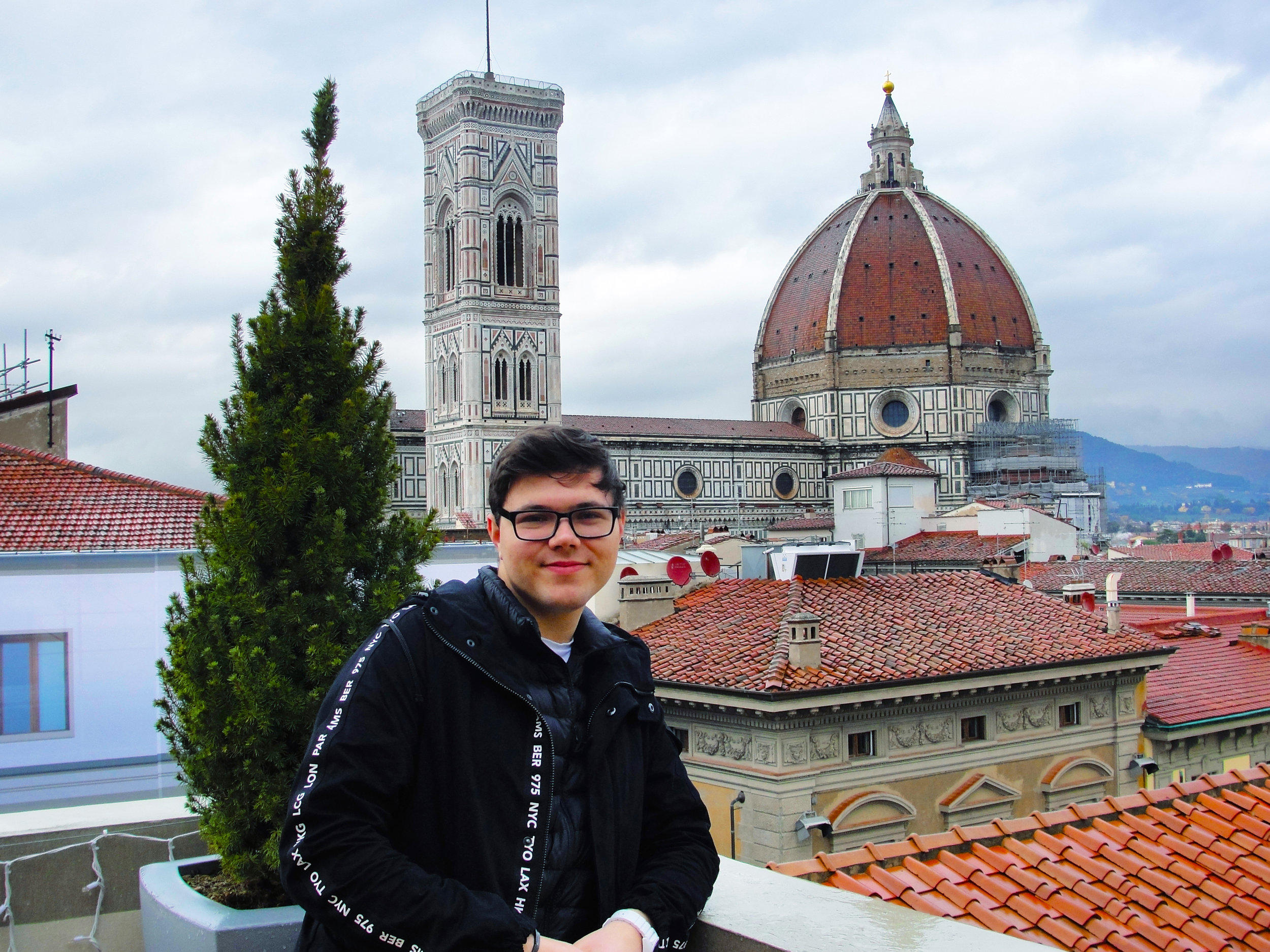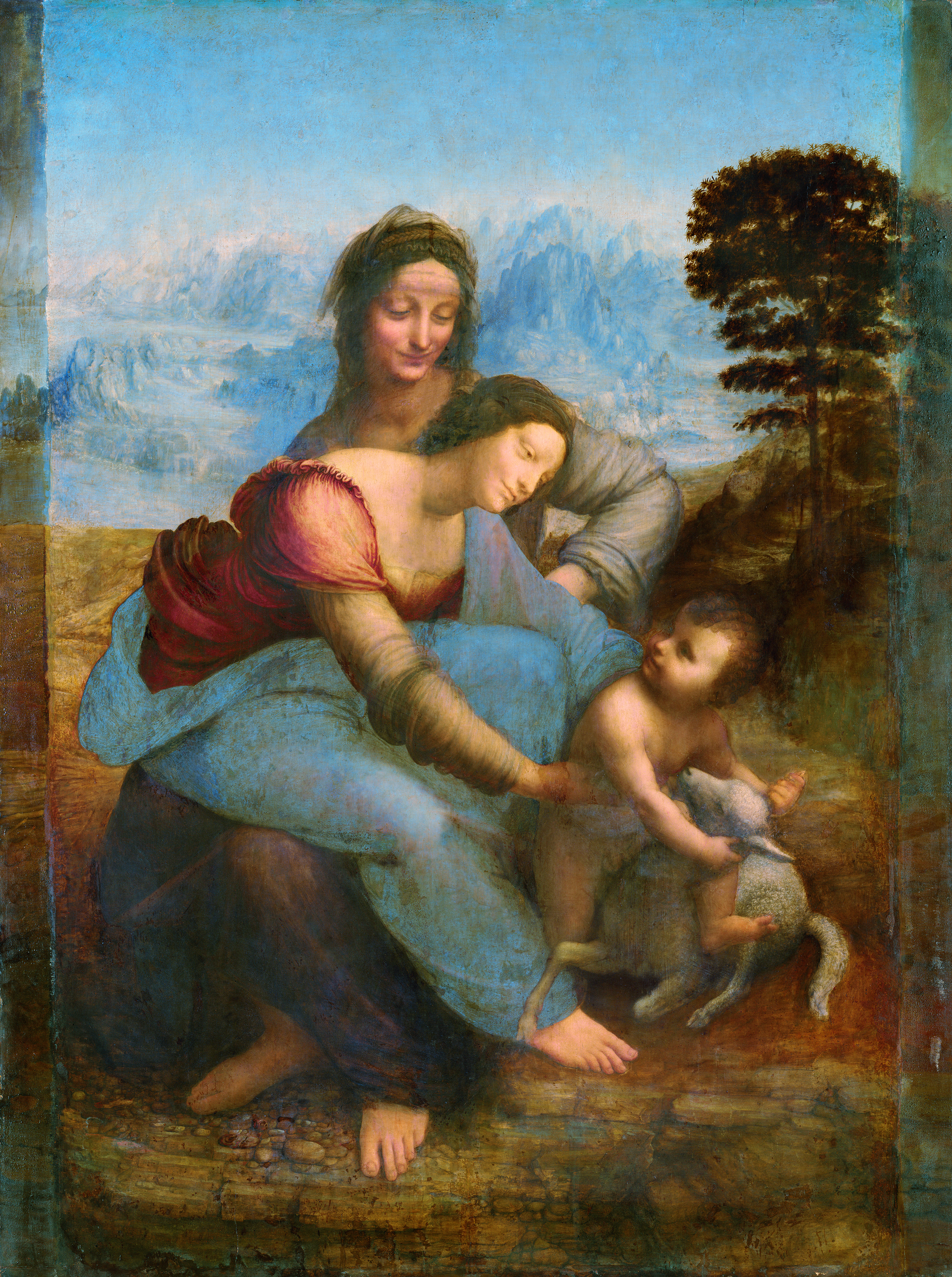Intro to Florence

I spent a semester studying in the birthplace of the Renaissance!
Cover Photo: Me with the Duomo in the background, Terrazza at La Rinascente, Florence, Italy (2017).
The City of the Renaissance
Florence, or Firenze in Italiano, has a long history, dating as far back as 59 BC, but Florence is known first and foremost as the birthplace of the Renaissance, the “rebirth” of Europe following the Middle Ages.
Italy was then a loose collection of city-states dominated by feudalism and every region had its own dialect. Around 1320, Florentine poet, Dante Alighieri wrote The Divine Comedy, an imagined tale about himself travelling the afterlife in effort to save his soul. This long narrative poem is credited as popularizing the Tuscan dialect and establishing the basis for the modern Italian language (it also informs much about how we view heaven and hell today).
In 1421, the isolationist Ming Dynasty of China closed trade with outsiders, leading to greater investment and trade in Italy. The Medici’s, a wealthy banking family, ruled Florence starting in 1434. Every city and region in Europe had its own currency but Florence was Italy’s central banking city, with many Medici banks in other cities, and therefore the Florentine currency, the florin, was among the most widely used. Trade and commerce fueled migration and prosperity, leading to a transfer of ideas and innovation to and from Florence.
Around 1450, German craftsman Johannes Gutenberg invented the continent’s first printing press, increasing the spread of knowledge. Books suddenly became widely available, leading to a rediscovery of the classical world through literature by ancient authors like Homer, Plato, and Aristotle. This generated interest in ethics, individualism, and secularism.
Art
The Medici’s, because of their wealth and power, served as Florence’s primary patrons of art. Among the greatest artists working in the city-state were Leonardo Da Vinci, Sandro Botticelli, and Michelangelo Buonarroti. They are still some of the most recognized Italian artists in history and Michelangelo’s David is the most famous sculpture in the world!
Spurred by a renewed interest in classical art, there were tremendous artistic innovations, namely proportion, perspective, and anatomy. Leonardo studied classic architects like Vitruvius and he would secretly dissect corpses to understand the human body. Michelangelo perfected contrapposto, known as hip-shift, in which a human figure’s weight rests on a single leg.
The largest collection of Renaissance work is in the Uffizi Galleries but there is art all over the city, including the Bargello, Galleria dell’Academia, Museo Novecento, and il Museo di San Marco. Trying to see everything can be overwhelming!
Architecture
Florence is among the most beautiful cities in the world and that is a testament to Italian architecture. Brunelleschi's cupola for the Cathedral of Santa Maria del Fiore was a tremendous accomplishment—two concentric domes without any additional framework—and it took 16 years to build. There are plenty of beautiful churches to see in Florence, including Basilica Santa Croce, where Michelangelo is buried, and Basilica di San Lorenzo, the burial place for the Medici family.
First time visitors to Florence must visit Piazza della Signoria, the beating heart of the city, which features the Palazzo Vecchio, the town hall, and Loggia dei Lanza, the open-air sculpture gallery designed by Orcagna in 1376.
Perhaps the most iconic structure in Florence, following the Duomo, is Ponte Vecchio, the “old bridge”. It was the first bridge built in the city and was occupied by butcher shops and tanneries until 1593, when Ferdinand I, tired of the smell, decreed that only goldsmiths and jewelers could occupy the bridge. During NAZI attacks in 1944, over a third of Florence was destroyed and Ponte Vecchio was the only bridge spared. Ponte Vecchio is still lined with jewelers selling their wares today.
Studying Abroad
If you are considering a semester in Florence you are not alone. Italy is the second most popular nation in which Americans study abroad, following the United Kingdom. Approximately 15,000 students come to Florence every year. I studied in Florence at the Santa Reparata International School Of Art where I learned about fashion marketing, Italian language, artists, and cuisine.
Food
The Italian cuisine is among the best known and most loved in the world: pasta, pizza, bruschetta, risotto, cannoli, gelato… But Italian food is not a monolith. Every region has its own specialties. When in Florence, visitors must try bistecca alla Fiorentina (porterhouse steak) and lampredotto (cow stomach).
In Italy even the simplest dishes taste amazing. In my opinion, there are few things better than tomato, basil, and mozzarella smothered in olive oil. Well, that and red wine.
Tourists often flock to Mercato Centrale for a taste of Florence but I would recommend the Mercato di Sant’Ambrogio for a more authentic experience. There’s also several supermarket chains to choose from like Carrefour, Coop, Pam Local, and Sapori & Dintorni Conad.
Recreation and Shopping
Despite its long history, Florence feels like a youthful city. As mentioned earlier, there’s a large student population and there’s so much to see and do. One of my favorite festivals was a gelato competition in Piazzale Michelangelo!
There are constant events in the Visarno Arena, like craft beer tastings, hot air balloon rides, and cultural festivals. There are temporary art exhibits in Forte di Belvedere, Palazzo Medici Ricardo, and Palazzo Strozzi. There’s a variety of clubs, pubs, and karaoke bars. You can also catch a movie at the beautiful Cinema Odeon, a theater performance at Opera di Firenze, or simply enjoy a live musician playing in the city streets.
While Milan is Italy’s official fashion capital, Florence is an important as well. In fact, both Gucci and Ferragamo have origins in Florence and they have museums in the city. Florence is also host to Pitti Uomo, a biannual gathering of menswear retailers, editors, and enthusiasts.
Florence offers shopping in a diverse price range, including Dior, Benetton, Desigual, and H&M. I recommend starting with la Rinascente, Italy’s high-end department store chain.
Transportation
Florence is a small city and thus very walkable. You can get almost anywhere in under half an hour. Of course there’s also a bus system but I really only used it to get to the airport.
Florence’s airport, Aeroporto Amerigo Vespucci, is small and easy to manage, but it does not host many connections. My classmates would often take trips from Pisa (an hour away by train), which offers cheap flights through Ryanair.
The main train station in Florence is Santa Maria Novella. You can get to most cities with a simple train ride, including Pisa, Bologna, Venice, Milan, Rome, and Naples.
In Italy, strikes are a fact of life. Taxis and trains are frequently stopped or delayed as part of union demands for better working conditions and increased investment in the public sector. Don’t let this ruin your day! Here are three rules to navigate this inevitability.
Stay informed. Strikes are generally posted in advance. You can find a schedule here. Avoid taking trips during posted times.
Prioritize, but be flexible. If you are only in Italy for a few days, know where you really want to go and what you can skip. My class trip to Rome was delayed by two hours because of a train strike and we had to rush through the Vatican Museums to accommodate our set itinerary; it wasn’t a pleasant experience.
Allow extra time. I almost missed my flight to Paris because I was running late and taxi drivers were on strike. The bus to the airport eventually arrived but I wish I had left earlier and avoided myself the extra anxiety.
Unforgettable
Florence is a gorgeous city, rich in culture, history, and art. From food to fashion, any visitor will find something to enjoy! The birthplace of the Renaissance is a truly incredible visit.
P.S. Questions!
Have you been to Italy before? Do you have a favorite Italian artist? What’s your favorite Italian food?





